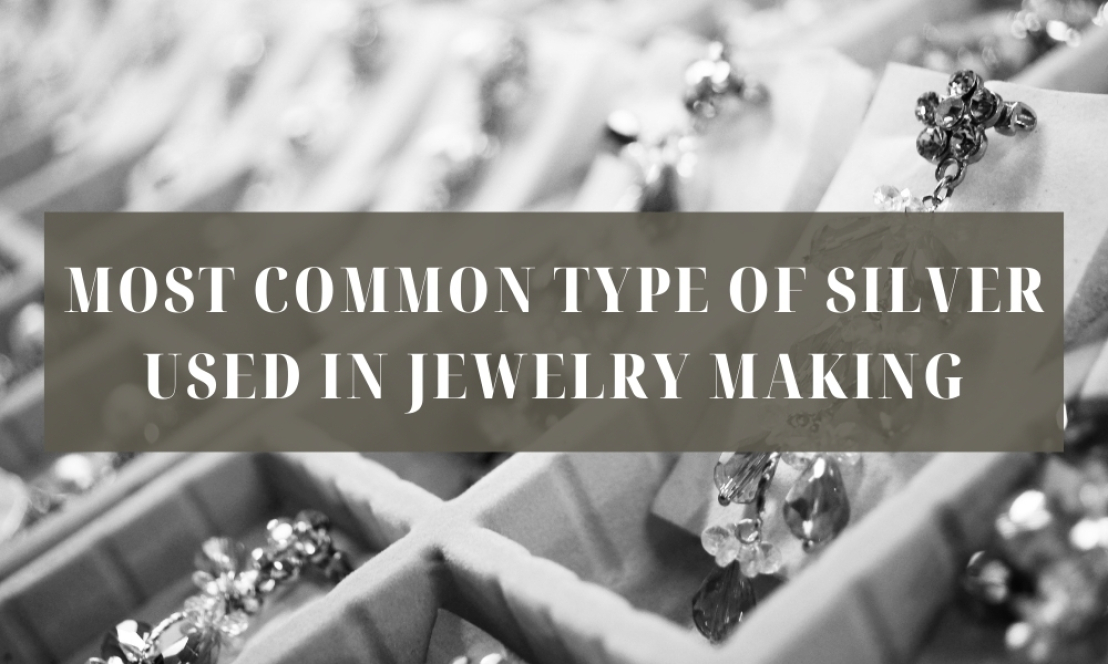Most Common Type of Silver Used in Jewelry Making

The most prevalent silver alloy used in jewelry making is sterling silver. It is 92.5% silver. The rest of the 7.5% consists of at least one metal. A considerable percentage of this 7.5% is usually copper given that it improves the solidity of the silver. Silver is generally alloyed with some other metals mainly because pure silver is soft by nature and can get easily broken or cracked. Using harder metals enhances the robustness of silver, making it possible for jewelry makers to create pieces that are gorgeous and solid enough to use every day. A common stamp you will see on silver is the percentage, 925 for sterling silver and 958 for Britannia silver.
Tarnish Resistant Silver Alloys Used In Jewelry Making
There are non-tarnish silver alloys introduced in the market. Argentium is making a huge name in the industry of jewelry making. The general alloy composition is from 93.5% to 96% silver, copper and germanium. The element germanium had been found to provide high tarnish resistance and increased ductility to silver.
Another non-tarnish silver alloy that is well worth noting is Silvadium. Its general alloy composition is 93% silver, 7% palladium and germanium. We know that germanium provides a non-tarnish effect to silver. Palladium, on the other hand, provides the same effect when alloyed with silver. So the mixture of germanium and palladium to silver makes it more resistant to tarnish and increases its hardness.
Other non-tarnish silver alloys today include Sterlium Plus and the Sterilite Sterling. The common components of each silver alloy is silver and germanium combined with other metals which are commonly copper, zinc, and silica.
Other Silver Alloys Used in Jewelry Making
While sterling silver is the most popular type of silver put to use in jewelry making, there are some other alloys that are worth mentioning:
Electrum. well known by the ancient Egyptians. Electrum is a naturally materializing alloy of silver and gold. Since electrum occurs naturally in nature, the percentage of silver to gold differs with every piece.
Niello. The is a black combination of lead, copper, and silver. It is employed a lot more like an enamel, so you may not usually see jewelry crafted solely of niello. It is used as an inlay on engraved metals or to fill in styles and designs. Like electrum, niello was well-known by the early Egyptians. They made use of the mixture through the Iron Age.
Silver Conclusion
Silver has a rich history and has been better valued than gold in various occasions. It has been used over a period of time as a medium of exchange to the point that its name is synonymous with money. Today, silver has grown more in demand because of its many uses. To name a few, silver plays an important part in photography, auto glass defogger, batteries, and magnetic strips.
Silver’s most eminent feature is its lustrous shine. However, it also has its drawbacks. The main drawback is that it easily tarnishes. Tarnish is a coating of oxidation that forms over some metals, including silver after they have been exposed to chemical reactions.
Store these items in protective pouches or containers where they are not exposed to hydrogen sulfide. Storing silver the right way greatly reduce the possibility of tarnish on silver. There are a variety of ways to get rid of tarnish from silver pieces, including the use of silver polish and do-it-yourself methods using common household products. These simple methods will give you a reason to love your silver jewelry more through time. Another reason that silver is a favorite metal for jewelry making is that it is less expensive than gold or platinum.


Comments : 0